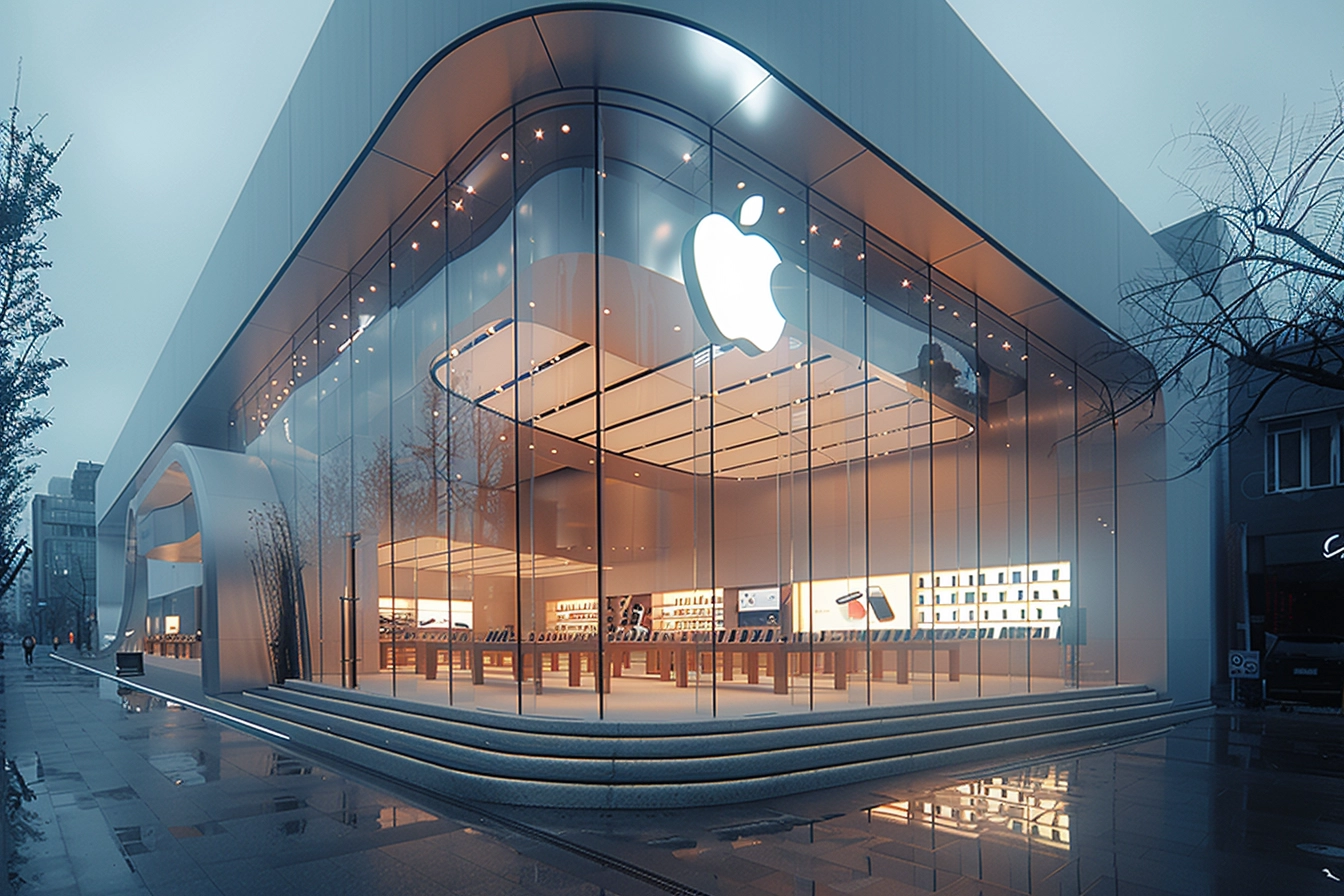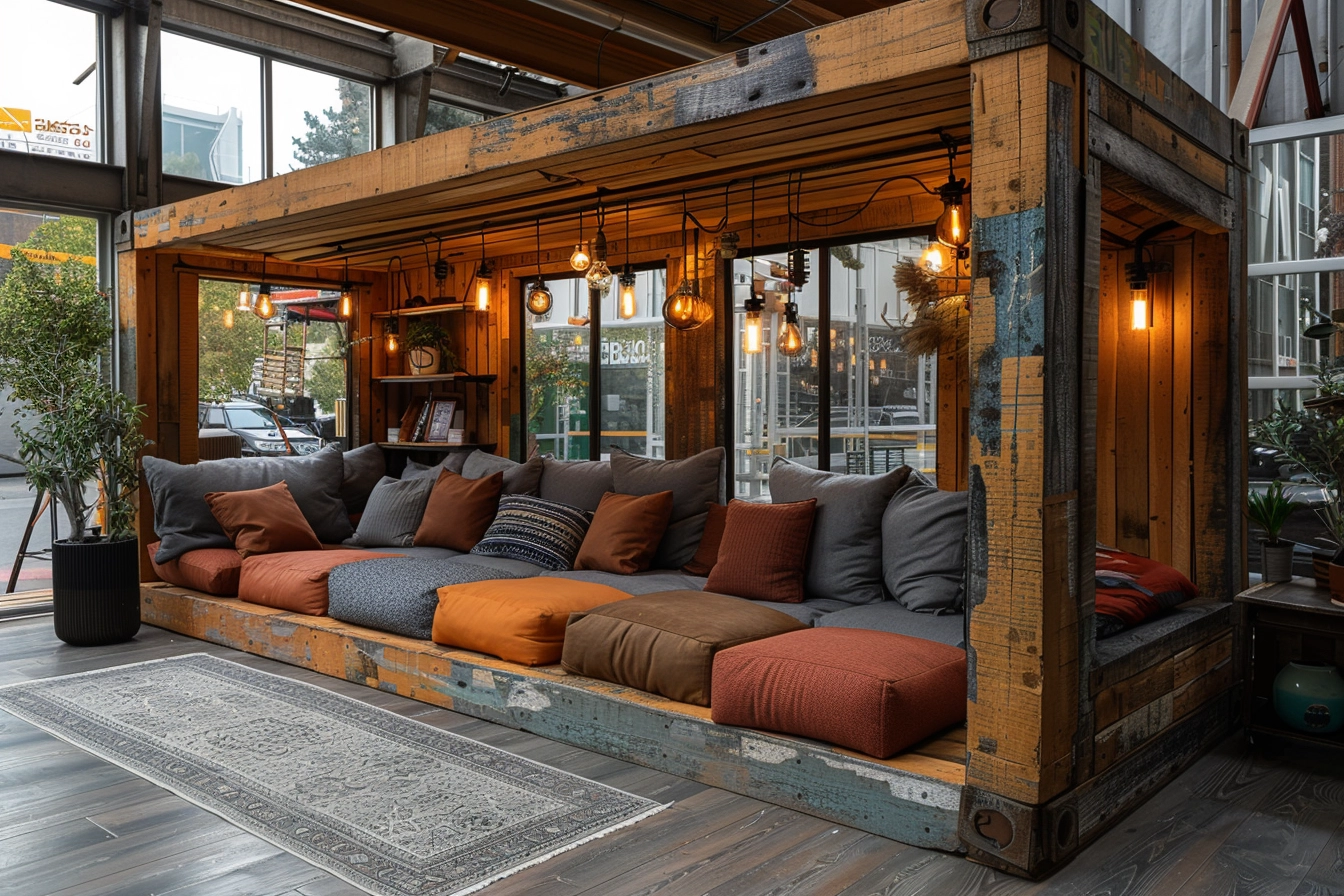Introduction to Storytelling Through Aesthetics
In branding and design, storytelling becomes a pivotal role, transcending mere aesthetics to forge profound emotional connections with the audience. More than just creating a visually appealing brand is involved in using aesthetics to tell a story; it also involves developing an interesting, captivating, and enduring narrative. When employed skillfully, this storytelling talent enhances the bond between a company and its clients and gives ordinary interactions a lasting impression.

It is impossible to exaggerate the value of storytelling in branding and design. The ability to visually communicate a captivating story sets a company apart from its competitors in a world full of constant noise and competition. A brand’s identity is shaped by the narrative behind its logo, the ideals communicated through images, and the ethos captured in a color scheme. These components are essential messengers of a brand’s central message as well as aesthetic upgrades.
Aesthetics uses the universal language of images to enhance storytelling. Studies indicate that the human brain processes visual information 60,000 times quicker than text, indicating that humans are innately visual beings. Therefore, without using words, one may narrate a tale and provoke emotions through the strategic use of color, font, images, and layout. When a brand’s message is in line with these emotions—joy, trust, anticipation, or nostalgia—visual storytelling can connect with people on a deeper level and greatly increase their memorability and attractiveness.
Learn more about how to use storytelling in branding:
Visual storytelling has a significant effect on audience engagement. The attractive design captures interest and offers a memorable, meaningful first impression. They give the viewer a sense of devotion and connection that goes beyond simple appeal. Customers are more likely to establish a long-lasting relationship with a brand when they recognize themselves reflected in its aesthetics. This turns them from passive observers into engaged players in the company’s narrative.
Using aesthetics to communicate a story is a clever and artistic approach to branding and design. It’s similar to balancing being unique with doing the task at hand well. Each visual element is chosen to advance the plot rather than merely because it is visually appealing.
Explore the brands that utilize the aesthetic-usability effect:
Elements of Aesthetic Storytelling
Using images to tell a story is similar to choreographing a dance in which each step counts. It involves combining typefaces, colors, graphics, and design in a way that conveys the values of your company. Like characters in a novel, each element has a distinct function to perform. Achieving the ideal blend is essential to building a genuine relationship with your audience and ensuring that they remember your brand. Learning these components will help you communicate with your audience directly and effectively; it’s similar to learning a language.

Color Psychology in Storytelling
Color is a potent instrument in the creative narrative’s armory. In addition to providing visual stimulation, it evokes certain emotions and connections. Color psychology studies this phenomenon—that different colors may influence perception and behavior. For instance, blue is a common option for financial institutions as it communicates a feeling of reliability and trustworthiness, but green is a popular choice for organic and environmentally conscious businesses since it is connected to growth and health. As a result, a brand’s attributes and values may be subtly conveyed through the deliberate use of color in branding, building a richer narrative that resonates with the intended audience on an emotional level.
Know about the psychology behind color choices in branding:
The Impact of Typography
The text arrangement and font selection used in typography are crucial in determining the narrative tone and readability of a brand. A message’s perception may be greatly influenced by the font type used; a serif font may be seen as traditional and trustworthy, whilst a sleek sans-serif font is associated with modernism and minimalism. Beyond aesthetics, font influences readability and how quickly and easily a story may be comprehended and retained. A brand’s narrative may be strengthened and made more approachable and engaging for the audience with the help of effective typography.
Discover the fonts that famous brands use:
Imagery and Symbolism
Images are the main element of a visual narrative; they might be drawings, photos, or symbols. They have this amazing capacity to say a lot with just one look, particularly in circumstances that are emotionally or nuanced. Brands may use visuals to showcase their identity, beliefs, and capabilities—ideas that are hard to properly portray via words alone. And if you look more closely, you may discover that the underlying symbolism in those images reveals a whole world of significance. In this approach, businesses may successfully express the many facets of their identities and personalities. By fusing the symbols, the visual language of a brand can grab people’s attention and connect them in a way that words alone can never do.

Layout and Composition
The arrangement of visual elements, or layout, defines the narrative flow and guides the viewer’s route through the story. A well-thought-out arrangement will ensure that the most significant elements of the tale are presented to the audience in a way that maximizes impact and understanding. Design ideas like hierarchy, balance, and contrast are all influenced by composition and are necessary to create an aesthetically pleasing and cohesive whole. A story’s interpretation and memory can be significantly impacted by the intentional use of alignment, grouping, and space.
Discover why certain brands’ designs captivate the users:
When expertly combined, these components of visual storytelling may take a brand’s story from being just facts to an immersive encounter. They transform viewers from inactive bystanders into engaged players in the brand’s narrative by inviting them to go deeper, feel, and connect. Design and branding are about telling tales that stick in the mind long after the initial impression. This means that mastering color, font, images, and layout goes beyond simply producing visually attractive material.
The real-world case studies of effective aesthetic storytelling will be discussed in the next part of this article. By examining these cases, the readers may gain useful insights and inspiration for incorporating aesthetic storytelling into their brand strategy. These examples demonstrate how businesses have utilized these aspects to craft captivating narratives that captivate people and encourage profound emotional connections.

Case Studies: Successful Aesthetic Storytelling
When one looks closely at the field of successful aesthetic storytelling, one can see how businesses have used typeface, color, imagery, and layout to produce compelling stories that appeal to their target audience. These case studies highlight the importance of visual storytelling and the careful preparation that goes into creating a brand that encapsulates a business, attracts customers, and stands out in a crowded industry.

Apple: The Epitome of Minimalism and Innovation
Apple is a fantastic example of imaginative storytelling since it skillfully blends simplicity and imagination to produce a compelling narrative. Clean lines, a monochromatic color scheme with strategic color splashes, and a sleek, sans-serif typeface all combine to project modernity and sophistication in the brand. Apple’s imagery highlights the product’s functionality and design, emphasizing the company’s commitment to innovation and quality. High-quality product images set against a basic, stark background are usually what makes it up.
The minimalist structure of Apple’s marketing materials highlights white space and draws the viewer’s focus to the most crucial details, resulting in an interesting and simple-to-read narrative. Because of its consistent look throughout all of its touchpoints, which tells a story of beauty, cutting-edge technology, and user-centric design, Apple has a strong emotional connection with its audience.

Airbnb: Creating a World Where Anyone Belongs Anywhere
Airbnb reframes the concept of travel and housing via artistic storytelling, conveying a story about experiences, community, and belonging. The brand uses approachable, friendly typography and warm, welcoming colors to create an atmosphere of openness and welcome. Airbnb’s logo, which features real houses and travel experiences from all around the world, emphasizes the diversity and sincerity of the travel experiences it offers. These images are more than just pictures; hidden inside are stories of travel, customs, and interpersonal relationships that are just waiting to be discovered. because of its focus on storytelling and photos created by users.
The layout of the Airbnb website encourages exploration and social interaction and provides visitors with the sense that they are part of a larger, global community of hosts and guests. Through its aesthetic decisions, Airbnb tells a tale of belonging and allows users to take on leading roles in a global play of discovery and connection.
Learn about the intersection of culture and branding:

Nike: Just Do It
Nike’s branding exemplifies excellence and motivates action via beautiful storytelling. The brand communicates power, tenacity, and the unwavering quest for excellence via the use of vibrant colors, dramatic imagery, and strong typography. Nike’s visuals, which show athletes in motion, perfectly convey the spirit of competition as well as the exhilarating feelings that come with success and tenacity. When combined with impactful imagery, the “Just Do It” tagline acts as a global call to action, inspiring people to go beyond their comfort zones.
Nike’s marketing materials have a style that reflects the intensity and motion of athletic endeavors, giving the impression that the spectator is a part of the action. This layout is characterized by dynamic lines and movement. Nike promotes a lifestyle and an ethos by involving customers in a tale of desire, difficulty, and success. This is an example of their aesthetic storytelling in action.
These case studies demonstrate how visual narrative in branding can have a profound impact. A brand’s beliefs and stories may be effectively communicated through a well-crafted aesthetic, fostering a strong emotional connection with the audience. Examples of this include Apple’s emphasis on innovation and simplicity, Airbnb’s focus on belonging and genuine experiences, and Nike’s celebration of excellence and dedication. These businesses have not only set themselves apart in their respective sectors but have also developed devoted followings of customers who share their goals and beliefs thanks to the thoughtful selection and integration of graphic components.
Implementing Aesthetic Storytelling in Your Brand
It takes careful thought and deliberate preparation to tell a story with aesthetics that is captivating. Aesthetic storytelling is a potent technique for engaging consumers, communicating brand values, and creating a distinctive identity, as demonstrated by successful firms.

Creating a Story with a Coherent Aesthetic
- Identify the Message and Core Values of Your Brand: Knowing your brand’s core values is the first step in creating an aesthetically pleasing tale. Your aesthetic narrative should be built upon your brand’s beliefs, mission, and personality. These components will direct your selection of visual elements, guaranteeing that your aesthetics complement the identity of your company.
- Recognize Your Audience: Creating a compelling story requires a thorough understanding of your audience. Take into account your target market’s tastes, behaviors, and demographics. What images do they find appealing? To which stories do they belong? Adapting your style to the preferences and expectations of your audience can improve connection and engagement.
- Selecting Your Visual Elements Wisely: Your narrative tools are color, typography, images, and layout. Choose hues that arouse feelings and connotations consistent with your brand’s messaging. Select a font that is readable on a variety of devices and captures the essence of your brand. Make use of imagery that relates to your audience’s emotions and conveys the tale of your brand. Lastly, think about how your layout will affect how the audience interprets your tale. Make sure it leads the audience through your story in a logical and captivating way.
Discover the brands that achieved success through visual harmony:

Tips for Aligning Visual Elements with Brand Values
- Consistency is Key: Maintaining consistency across all platforms and touchpoints is crucial. Make sure your visual components are the same. Your audience will recognize and remember your story better as a result of this consistency, which also strengthens your brand identification.
- Accept Authenticity: Try to be as genuine as possible while using images and narrative. Audiences respond more strongly to real-life experiences and ideals reflected in authentic tales and images.
- Emphasis on Emotional Connection: Make use of your aesthetic to arouse feelings consistent with the message of your brand. Strong emotional ties are important motivators for loyalty and engagement.
- Innovate Within Your Narrative: As your brand expands, don’t be scared to experiment and change the way you convey your narrative visually, even if consistency is still crucial. By doing this, you can maintain your story interesting and audience-relevant.

Measuring the Impact of Aesthetic Storytelling
Measuring the impact of your artistic storytelling endeavors is crucial to ensuring their efficacy. To determine how well your visual narrative connects with your audience, use measures like social media activity, website traffic, conversion rates, and engagement rates. Direct consumer insights and feedback may also yield insightful data about the psychological and emotional effects of your beautiful narrative.
Using creative storytelling in your brand requires exploration and innovation. It entails comprehending the core values of your brand, the aspirations of your target market, and the ability of visual components to tell an engaging story. You can establish a distinctive identity that connects with your audience more deeply by creating a unified aesthetic story and matching your visual aspects to your brand principles.



